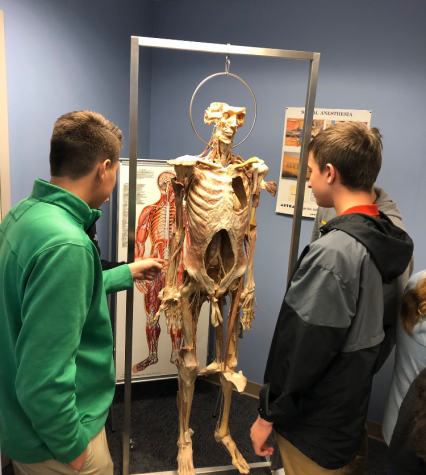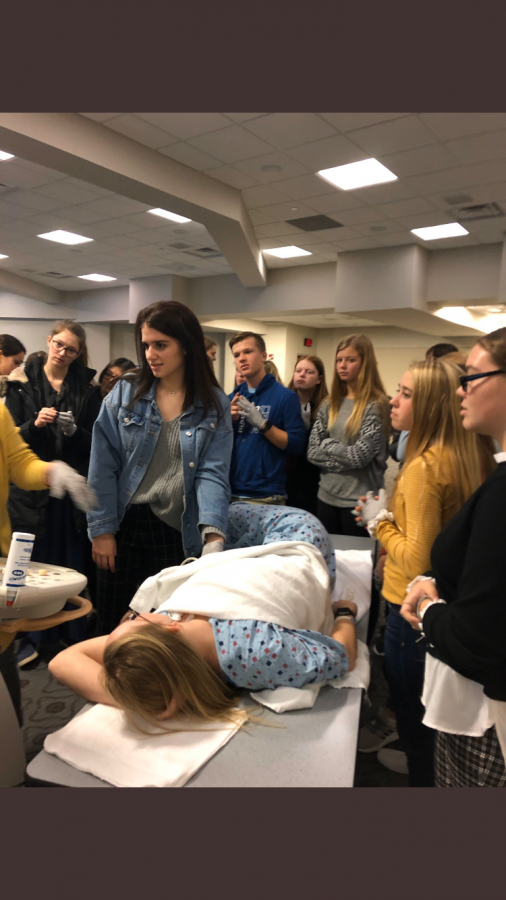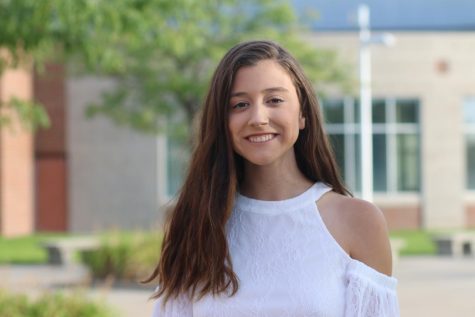Heartbeat of HOSA
Field trip to Bryan brings first hand medical experience
Students take turns using the sonogram on nurses within the building.
November 8, 2019
Millard West HOSA students fought off the strong scent of embalming formaldehyde in sterile hospital labs in order to poke and hold real human hearts and brains on Thursday, Nov. 6. Within Bryan College of Health Sciences, 48 students rotated through interactions with internal organs extracted from cadavers and simulations involving real medical technology.
HOSA members, eager to gain incite on the medical world, were given a chance at having hands on work with interactive medical equipment set at a college standard. HOSA sponsor Jeanne Meyer wanted to provide a more direct contact with medical aspects for her students with more of a realistic representations of what is taught within HOSA meetings.
“The students were given the opportunity to have a hands on education,” Meyer said. “Since Bryan is a college, there were better experiences for the students that aren’t available within a high school setting. I was able to establish this field trip through the working relationships I have established with the staff out at Bryan.”
At Bryan there were three main visitations. The plastinates, which are body parts preserved in plastics that do not smell, decay and can be touched, were brought out to examine the depth and dimension of the human body. Being shipped from Germany, Bryan is one of the only colleges within the country to have these 3D models, giving the students a true once in a lifetime opportunity. The next presentation involved the body of a 101 year old man. Here students were allowed to touch inner organs, look at the different body systems, and ask med student questions about what can be seen by looking at the specific persons’ appearance. Lastly, students practiced imaging on nurses and got a brief run down of the college’s programs.
“It was interesting to use a real piece of equipment you can find in hospitals,” senior Grace Caniglia said. “We got to use an echocardiogram machine and actually look at a heart in real time. The nurse helped us place the wand and explained how the machine uses ultrasound to track how blood pumps through the heart.”

Differentiating from last years visitation, Bryan provided a baby simulator that helps practicing on watching respirations. With the wide range of simulations given through the trip, it provided a taste of different fields for the students involved.
“I was able to learn more about Bryan College and what they specialized in,” junior Palmer Wright said. “I never realized that they had a pre-med undergraduate option. This made me think about the options available in the medical field and opened my eyes to some jobs I had never heard of before.”
From holding brains to imaging blood flow, students were given a well rounded experience thanks to Bryan College of Health Sciences.







